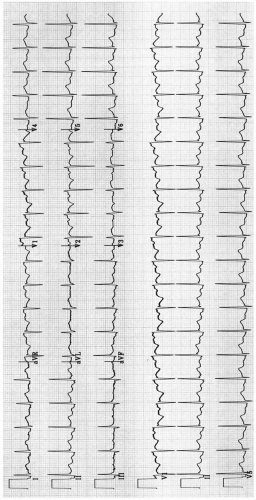A wide variety of conditions can affect the pericardium, as listed in
Table 26.1. The yield of the standard diagnostic evaluation is very low, about 16%. Idiopathic post viral, neoplastic, connective tissue disorders and uremia account for most acute pericarditis diagnosed in the clinical setting. When upper respiratory symptoms precede acute cardiac involvement, the most common etiology is
post viral pericarditis. Coxsackie A or B virus or echovirus are the common agents (
1). The term
acute idiopathic pericarditis applies when there is no clear etiology identified and it is presumed to be viral or autoimmune. Viral serologic testing has a very low diagnostic yield and does not change management. Therefore it is not routinely recommended. Among the entities listed in
Table 26.1, the human immunodeficiency virus (HIV) is an increasingly common etiology for the acute pericarditis (
2,
3) that is the most frequent cardiovascular manifestation of AIDS. The condition may be caused by HIV itself or may result from opportunistic infections or neoplasms (such as lymphoma). The presence of pericardial effusion in HIV syndrome is associated with poor prognosis.
Acute pericarditis should be considered in the differential diagnosis in the presence of hemodynamic deterioration after cardiac procedures or with new radiographic cardiomegaly.




